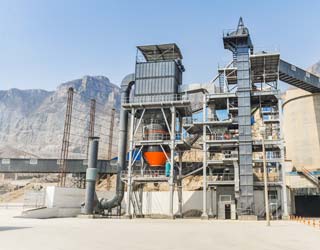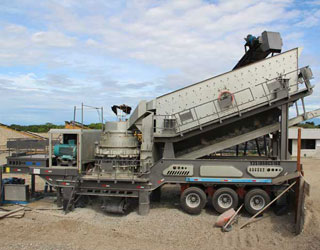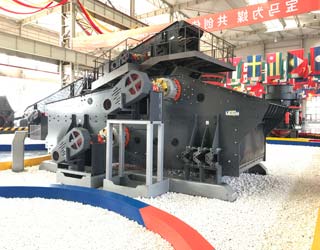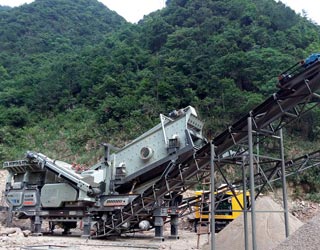dolomite and limestone production


A REVIEW OF THE DOLOMITE AND LIMESTONE INDUSTRY IN SOUTH AFRICA
DOLOMITE AND LIMESTONE Executive Summary MgCO Limestone is defined as a calcareous material or rock with a limestone content (CaCO 3) of at least 70%. Lime, limestone and dolomite products are used in four principal industries in South Africa: Cement manufacturing, metallurgy (steel refining), manufacturing and agriculture (fertilizers, fungicides,
احصل على السعرالحصول على الاقتباس WhatsApp
WhatsApp
BERGFEX: Dolomiten: Holiday Dolomiten
The Dolomites had their origins in a prehistoric tropical sea. About 250 million years ago, the present-day arc of the Alps was part of the continent Pangea, which was located far to the south, in the Earth’s tropical zone. Given the presence of mollusks, algae, coral and fish, this area saw massive limestone production.
احصل على السعرالحصول على الاقتباس WhatsApp
WhatsApp
DONG SON RESOURCES GROUP OVERVIEW: Dong Son Resources is specializing
Dolomite Products and Prodcution Capacity: No. Products Units Production Capacity 1 Dolomite powder – Size: 0-3mm MT 185,000.00 per year 2 Dolomite powder – Size: 80-650 Mesh MT 80,000.00 per year 3 Limestone for Steel – Size: 40-80mm MT 320,000.00 per year
احصل على السعرالحصول على الاقتباس WhatsApp
WhatsApp
Geology and Production Significance of Dolomite, Arab-D Reservoir
Dolomite typically has a higher grain density and acoustic velocity than limestones, which affects the response of most porosity wireline logging tools to dolomite rocks. In addition, dolomite reacts more slowly to the presence of acids than does limestone, resulting in uneven responses to acidization treatments. Surface chemistry differences may also result in dolomite and limestone differing
احصل على السعرالحصول على الاقتباس WhatsApp
WhatsApp
Limestone (Industrial) Refer also Dolomite (Industrial)
Limestone typically containing approximately 90.5% CaCO 3 was shipped to the Birkenhead cement plant until 1988, when operations were scaled down in favour of increased production from Klein Point. Substantial reserves remain, but ship-loading facilities have been dismantled. The Rapid Bay deposit consists of grey, white and brown medium to coarse-grained banded marble of the Normanville Group
احصل على السعرالحصول على الاقتباس WhatsApp
WhatsApp
Limestone (Industrial) Refer also Dolomite (Industrial)
Limestone typically containing approximately 90.5% CaCO 3 was shipped to the Birkenhead cement plant until 1988, when operations were scaled down in favour of increased production from Klein Point. Substantial reserves remain, but ship-loading facilities have been dismantled. The Rapid Bay deposit consists of grey, white and brown medium to coarse-grained banded marble of the Normanville Group
احصل على السعرالحصول على الاقتباس WhatsApp
WhatsApp
Dolomite (mineral)
Where calcite limestone is uncommon or too costly, dolomite is sometimes used in its place as a flux for the smelting of iron and steel. Large quantities of processed dolomite are used in the production of float glass. In horticulture, dolomite and dolomitic limestone are added to soils and soilless potting mixes as a pH buffer and as a
احصل على السعرالحصول على الاقتباس WhatsApp
WhatsApp
Glass | Lhoist
Fine-milled limestone and dolomite products as well as fine white lime and dolomite lime are used. Calcinated lime and dolomite products
stone, dolomite, and silica are widespread throughout the world, although there are examples where an adequate flux source was not available and this affected the process selection. Limestone and Dolomite Limestone and dolomite fluxes used for ironmaking and steel- making in the United States originate primarily from Michigan.
احصل على السعرالحصول على الاقتباس WhatsApp
WhatsApp
Limestone and Dolomite and their Use in Iron and Steel Plant – IspatGuru
Limestone and lime products are used as fluxing material both in ironmaking and in steelmaking. Basically limestone is used as a slag former, while dolomite is used as a slag former, slag modifier and as a refractory material. The process of iron making is the reduction of iron ore to produce iron.
احصل على السعرالحصول على الاقتباس WhatsApp
WhatsApp
Dolomite – Algyr
Dolomite limestone is a type of rock and mineral rock with the chemical formula of calcium magnesium carbonate and the molecular structure of CA Mg (CO3) 2. The difference between dolomite and lime is the presence of magnesium in its structure, so that 50% of it is calcium carbonate and 40% of magnesium. In the decomposition of dolomitic limestone, about 22% of calcium and 11% of magnesium can
احصل على السعرالحصول على الاقتباس WhatsApp
WhatsApp
Philippine Mining Service Corporation
The company pioneered the production of quality Dolomite in the entire Philippines, and became a major supplier of Dolomite in Japan and the rest of Asia. On April 1, 2001, the company acquired the Limestone plant in Garcia-Hernandez, Bohol from Philippine Sinter Corporation (PSC).
احصل على السعرالحصول على الاقتباس WhatsApp
WhatsApp
Lime Production: Industry Profile
The production of lime begins with the quarrying and crushing of limestone. Limestone is a general term that covers numerous varieties of sedimentary rock. Limestone can be composed of the following four minerals, plus impurities: calcite (CaCO 3), aragonite (also CaCO 3 but with a different crystal structure from calcite), dolomite (CaMg(CO 3
احصل على السعرالحصول على الاقتباس WhatsApp
WhatsApp
Dolomite (mineral)
Where calcite limestone is uncommon or too costly, dolomite is sometimes used in its place as a flux for the smelting of iron and steel. Large quantities of processed dolomite are used in the production of float glass. In horticulture, dolomite and dolomitic limestone are added to soils and soilless potting mixes as a pH buffer and as a
احصل على السعرالحصول على الاقتباس WhatsApp
WhatsApp
Chapter 5 Characterisation of limestone and lime Corrected
Dolomite 0 < 10 > 90 < 100 19.67 – 21.86 The porosity of limestone varies between 2 % and 8 %. The pore size ranges between 10 nm and 100 nm. In the pores, water can be adsorbed. Therefore, limestones with high porosity lead to decrepation in kilns due
احصل على السعرالحصول على الاقتباس WhatsApp
WhatsApp
Dolomite (mineral)
Where calcite limestone is uncommon or too costly, dolomite is sometimes used in its place as a flux for the smelting of iron and steel. Large quantities of processed dolomite are used in the production of float glass. In horticulture, dolomite and dolomitic limestone are added to soils and soilless potting mixes as a pH buffer and as a
احصل على السعرالحصول على الاقتباس WhatsApp
WhatsApp
Limestone and Crushed Rock
About three-quarters of the crushed stone production is limestone and dolomite, followed by, in descending order of tonnage: granite, traprock, sandstone and quartzite, miscellaneous stone, marble, slate, calcareous marl, shell, volcanic cinder and scoria. Limestone, one of the largest produced crushed rock, is a sedimentary rock composed
احصل على السعرالحصول على الاقتباس WhatsApp
WhatsApp
Limestone—A Crucial and Versatile Industrial Mineral Commodity
Limestone Production Patterns Most of the limestone that is mined . is crushed for aggregate. The majority of U.S. crushed stone production has come from limestone for at least the last 40 years. This is true even though carbonate rocks are only 25 to 35% of the rocks at the surface. U.S. crushed stone operations have
احصل على السعرالحصول على الاقتباس WhatsApp
WhatsApp
Difference Between Limestone and Dolomite | Compare the Difference
Limestone vs Dolomite. Both limestone and dolomite are types of rock made of carbonate residues. The patterns of the way they behave chemically are almost the same with varied intensities. However, the structure and the formation of these rocks are quite different.
احصل على السعرالحصول على الاقتباس WhatsApp
WhatsApp
Dolomite – A Useful Mineral – IspatGuru
The dolomitization process results in a slight volume reduction when limestone is converted into dolomite. This can produce a porosity zone in the strata where dolomitization has occurred. These pore spaces can be traps for subsurface fluids like oil and natural gas. This is why dolomite is often a reservoir rock which is sought during the exploration for oil and natural gas. Dolomite can also
احصل على السعرالحصول على الاقتباس WhatsApp
WhatsApp
DOLOMITE (Calcium Magnesium Carbonate)
They are originally deposited as calcite/aragonite rich limestones, but during a process call diagenesis the calcite and/or aragonite is altered to dolomite. The process is not metamorphism, but something just short of that. Magnesium rich ground waters that have a significant amount of salinity are probably crucial and warm, tropical near ocean environments are probably the best source of
احصل على السعرالحصول على الاقتباس WhatsApp
WhatsApp
Limestone and Crushed Rock
About three-quarters of the crushed stone production is limestone and dolomite, followed by, in descending order of tonnage: granite, traprock, sandstone and quartzite, miscellaneous stone, marble, slate, calcareous marl, shell, volcanic cinder and scoria. Limestone, one of the largest produced crushed rock, is a sedimentary rock composed
احصل على السعرالحصول على الاقتباس WhatsApp
WhatsApp
Why is Dolomitic Limestone better
Dolomite is formed through a process called “dolomitization,” where lime mud and limestone are altered by magnesium-rich groundwater, converting calcium into magnesium. Often times it’s difficult to distinguish between Dolomite and regular Limestone due to their very similar appearance, so when in doubt, hydrochloric acid is used to determine whether a rock is Dolomitic or regular. When
احصل على السعرالحصول على الاقتباس WhatsApp
WhatsApp
Dolomitic Limestone
Limestones (dolomitic and dolomite) supply Mg in many soils as well as some primary and secondary minerals. Mg, unlike Ca, is contained in several secondary minerals e.g., montmorillonite, vermiculite, illite, and chlorite. Soils rich in these minerals usually have sufficient available Mg and do not need supplements. Much like Ca, most of the available Mg is exchangeable but usually at a lower
احصل على السعرالحصول على الاقتباس WhatsApp
WhatsApp
Limestone—A Crucial and Versatile Industrial Mineral Commodity
Limestone Production Patterns Most of the limestone that is mined . is crushed for aggregate. The majority of U.S. crushed stone production has come from limestone for at least the last 40 years. This is true even though carbonate rocks are only 25 to 35% of the rocks at the surface. U.S. crushed stone operations have
احصل على السعرالحصول على الاقتباس WhatsApp
WhatsApp
Limestone and Dolomite and their Use in Iron and Steel Plant – IspatGuru
Limestone and lime products are used as fluxing material both in ironmaking and in steelmaking. Basically limestone is used as a slag former, while dolomite is used as a slag former, slag modifier and as a refractory material. The process of iron making is the reduction of iron ore to produce iron.
احصل على السعرالحصول على الاقتباس WhatsApp
WhatsApp
Dolomite (rock)
The geological process of conversion of calcite to dolomite is known as dolomitization and any intermediate product is known as dolomitic limestone. [3] [4] The "dolomite problem" refers to the vast worldwide depositions of dolomite in the past geologic record in contrast to the limited amounts of dolomite formed in modern times.
احصل على السعرالحصول على الاقتباس WhatsApp
WhatsApp
A REVIEW OF THE DOLOMITE AND LIMESTONE INDUSTRY IN SOUTH AFRICA
DOLOMITE AND LIMESTONE Executive Summary MgCO Limestone is defined as a calcareous material or rock with a limestone content (CaCO 3) of at least 70%. Lime, limestone and dolomite products are used in four principal industries in South Africa: Cement manufacturing, metallurgy (steel refining), manufacturing and agriculture (fertilizers, fungicides,
احصل على السعرالحصول على الاقتباس WhatsApp
WhatsApp
2.A.3 Limestone and dolomite use GB2009
2.1 Process description Limestone (CaCO3) and dolomite (CaMg(CO3)2) are basic raw materials having commercial applications in a number of industries. These carbonates are consumed in the mineral industries (e.g. during the production of cement, lime and glass) and also in metallurgy (e.g. iron and steel),
احصل على السعرالحصول على الاقتباس WhatsApp
WhatsApp
Limestone and Dolomite and their Use in Iron and Steel Plant – IspatGuru
Limestone and lime products are used as fluxing material both in ironmaking and in steelmaking. Basically limestone is used as a slag former, while dolomite is used as a slag former, slag modifier and as a refractory material. The process of iron making is the reduction of iron ore to produce iron.
احصل على السعرالحصول على الاقتباس WhatsApp
WhatsApp
Limestone
Limestone is the raw material for production of lime, primarily known for treating soils, purifying water and smelting copper. Lime is an important ingredient used in chemical industries. [109] Limestone and (to a lesser extent) marble are reactive to acid solutions, making acid rain a significant problem to the preservation of artifacts made from this stone.
احصل على السعرالحصول على الاقتباس WhatsApp
WhatsApp






